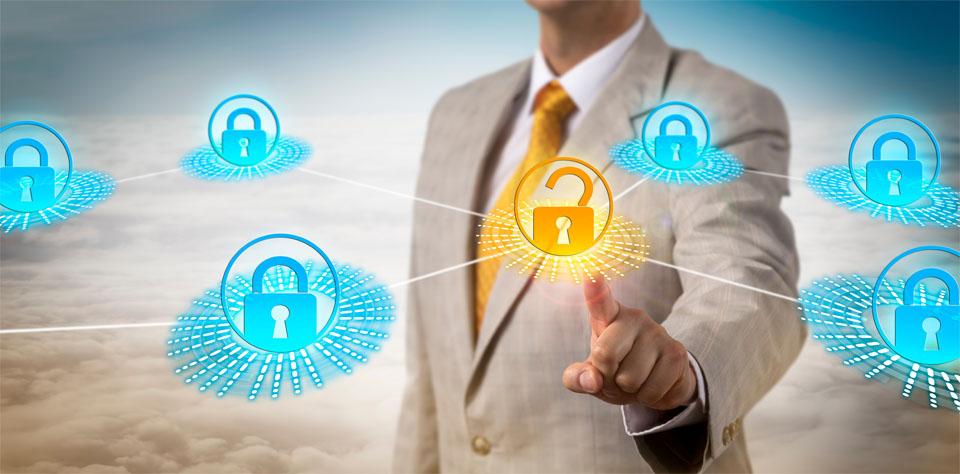Table of Contents
VPNs are a great way to safely, securely and remotely access enterprise networks. The technology was in fact invented for this reason before it was widely adopted for streaming, torrenting, and surfing the internet anonymously.
Using a VPN, however, gives users more capability to access corporate resources, a situation that can put corporate data at risk. That is why over the years, Software Defined Perimeter or SDP has become more popular.

What Is an SDP?
SDP is a recently developed technology (2007) that is based on the ‘need to know the model.’ The technology was first deployed by the US-based Defense Information Systems Agency and works by verifying a device’s posture and identity before granting access to the application infrastructure.
In other words, users of the system are only granted access based on predefined policies, and only to the network resources that they have been authorized to use.
SDP, therefore, prevents most of the common network threats, such as SQL injection, server scanning, denial of service, man-in-the-middle, operating system and application vulnerability exploits, cross-site scripting, and other forms of attacks by unauthorized users.
To answer the question of VPN vs SDP: what technology works best for you? It is best to first have an in-depth look at some of the reasons that SDP is gaining ground over VPN apps.
Limited Access
Traditionally and as earlier noted, employees have been relying on VPN apps to access corporate resources. VPNs, despite providing security, are however too lenient, and allow staff to access corporate resources and network areas that extend beyond their work requirements. This poses a danger to firms because they can serve as a conduit for data breaches. With the rise of the cloud and the data economy, companies have had to adopt new ways of protecting their data and SDP is a perfect solution for this.
Device Authentication
SDPs support a variety of devices. It can authenticate laptops, PCs, mobile devices, tablets and so on. But the devices have to be authorized. Otherwise, it cannot allow access. Compared to VPNs, this provides an extra layer of security.
It also means that you don’t have to necessarily secure your computer and devices with PC repair software and or Android cleaner apps because SDPs are not easy targets for malware or hackers. They are impenetrable.
Network Isolation
SDPs work by hiding critical IT infrastructure by ‘blacking’ out everything from outsiders. Even when the IT infrastructure in the cloud or on location, only authorized users can “see it.” For cybercriminals, SDPs are very difficult to hack into. For this reason, it is hard to even know that critical corporate resources exist in the first place.
Authorized user devices are only assigned a point to point connections with the rest of the network being isolated or completely inaccessible.
Easier to Manage
Compared to VPNs, it is much easier to manage SDPs. VPNs require that they are configured separately at each of the devices and data centers. SDPs, however, don’t require a lot of configurations as network administrators can add network resources one by one and create the policies that govern access in a centralized way.
If the SDP is hosted in the cloud, all of the necessary security controls can be implemented without the need to configure the software on each device separately as happens with VPNs.
Cost-Effectiveness
Some companies have hundreds, if not thousands of employees, all of whom need to access corporate resources remotely. When using VPNs, this can cost a fortune. But when an SDP is implemented, the number of employees has no impact on the price of the software system.
This means that in the long run, companies will save a ton of money for opting to use SDPs as opposed to VPNs. In other words, SDPs have the potential of unrestrained growth.
No Speed or Location Limitations
The way VPNs work –rerouting internet traffic-mean that they will always cut down your internet speeds. VPNs are also restricted in some jurisdictions, such as China and are subject to a lot of monitoring by many governments. SDPs are not.
Geographically scattered applications can easily and conveniently be accessed using SDPs without any of the problems normally associated with VPNs.
You could be in China or North Korea and still connect to your work network without the risk of breaking any laws or being suspected of anything, all without compromising the speed of your internet connection.
Support of Broader Risk-based Policy
SDPs can be configured to make access decisions based on a number of risk criteria, such as malware outbreaks, threat intelligence, new software, and so on. It is also much easier to incorporate AI-based solutions to SDPs than VPNs which is important because they can easily evolve and adapt to new security threats.
Easier to Integrate with Other Forms of Technology
Combined with VPNs, SDPs offer better security to a critical IT infrastructure. You can even consider them as a way of reinforcing already existing security measures.
While it might seem that this article has spent significant time lamenting over the ills of VPNs and praising the new kid in the block, this is not to say that VPN apps have no clout of their own.
For individual use, VPN apps are still the more favorable choice to access any network. They are also incredibly cheap and considering that most people don’t have huge corporate networks that require “blacking out” some sections, they are a perfect way to safely transmit and secure data.
Not to mention, VPN apps allow users to access a wider network of resources over the internet. Unlike SDPs, they are not limited to sections of a network or just to certain corporate resources.
They are also multi-functional, they can be used for gaming, streaming, visiting sites anonymously, banking, and so on. SDPs cannot do any of these things, at least not at the moment.
What technological solution you choose to access remote computers is up to you but if you are interested in learning more about VPNs and other forms of emerging technologies, you can always consult a PC repair tips and tricks guide. The information there is constantly updated.



